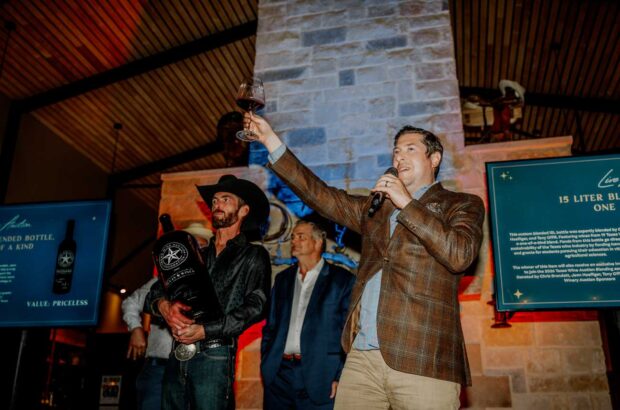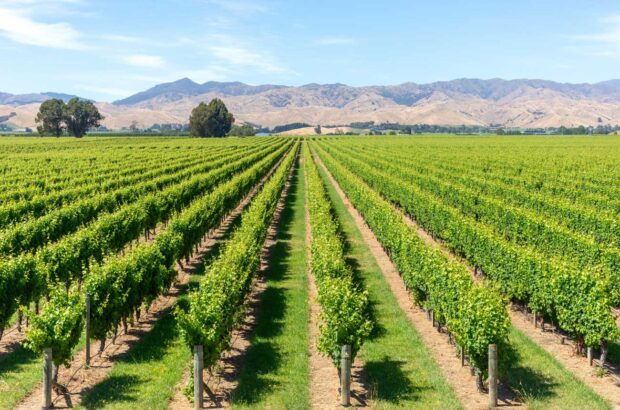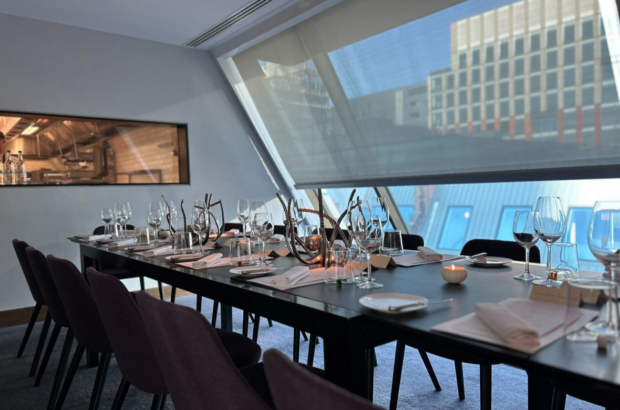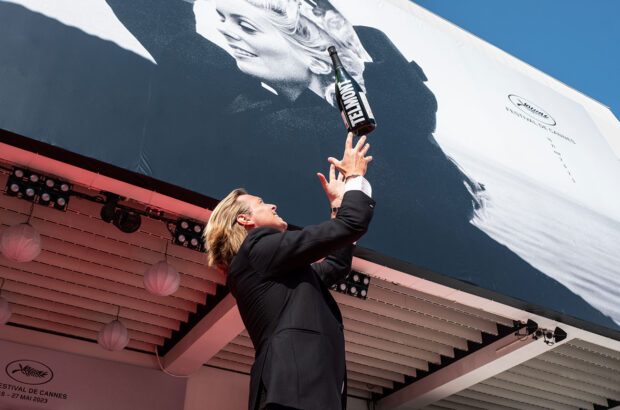The first point to make is that there is a difference between ‘lower alcohol’ wines (say 9% abv) and non-alcoholic. The former can be created by using ‘normal’ winemaking techniques and playing with things like earlier picking times (so less sugar to turn into alcohol), and ‘lazy’ yeast strains to generate a lower-alcohol end product.
But when it comes to wines below 0.5% abv (the level at which it’s generally accepted that there is no danger of intoxication) then the only way to do that is by de-alcoholisation.
The key concept to removing alcohol from wine is that ethanol has a lower boiling point (78°C) than water. So if you heat up the liquid, there will come a point when the alcohol evaporates off, leaving behind a 0% abv drink.
Before you decide to try this at home in a saucepan, it’s worth pointing out that there are two problems. The first is that wine doesn’t respond too well to being heated up to these kind of temperatures, and secondly, at about the same temperature as you’re boiling off the alcohol you’re probably also removing all of the volatile flavour compounds that give the wine its taste.
So unsurprisingly, the processes used to create alcohol-free wine are somewhat more scientific than that.
‘Reverse osmosis’ – essentially, forcing the wine through a membrane at pressure, is well established in the wine world. It separates the (larger) flavour molecules from the smaller water and alcohol ones, and is cheap to set up.
But this technique is only used to lower alcohol levels by a few percent (say, from 16-14%). To get to levels like 0% or 0.5%, companies use vacuum distillation.
Distillation is basically heating something until it starts to evaporate. And if you do it in a vacuum, it has the huge advantage that boiling points are a lot lower.
Typically, this is around 35-40°C, though some companies now have vacuum distillation columns which operate at below 30°C – not much above room temperature.
Vacuum distillation is a well-established technique, invented by Carl Jung in Germany back in 1907. And though there have been improvements and additions to the system since then (most notably the introduction of Spinning Cone Column technology – a flavour extraction system originally designed for the food industry), the fundamental principle remains the same.
Heating wine under pressure at lower temperatures allows for a precise and relatively gentle way of splitting the drink into three elements: the alcohol, the flavour compounds (some people call them ‘essence’) and water.
These are collected separately. The alcohol is sold off (usually for quite good money!) and the other two elements blended back together.
So, is this de-alcoholised flavour/water mixture ready to drink?
The answer is ‘generally no’. There is one more crucial stage to go through first – and that is ‘rebalancing’.
Alcohol is a big part of a standard bottle of wine. It might only be 13% of the original product, but it transports flavour and – equally crucially – provides mouthfeel.
So removing it changes a drink a lot. Acidity seems sharper, tannin more pronounced and mid-palate somewhat thin. Some flavours get lost, others become more concentrated.
To iron out these problems wineries often add small amounts of flavouring and/or some of the original must (grape juice pre-fermentation). These can put back missing flavour compounds and ‘fatten out’ the palate with a little natural sweetness.
But every winery has a different strategy.
Torres in Spain, selects grapes with de-alcoholisation specifically in mind, so they won’t need any further alteration. An original wine with plenty of fruit, high aromatics and low tannin and acidity is more likely to be naturally balanced post de-alcoholisation.
Giesen in New Zealand has a different approach. The producer uses the same parameters when selecting fruit for its range of alcohol-free wines as for its full-strength bottles. ‘To make a good 0% wine you must start off with a good quality full strength wine,’ says Giesen’s alcohol-free winemaker, Reinier van Greunen.
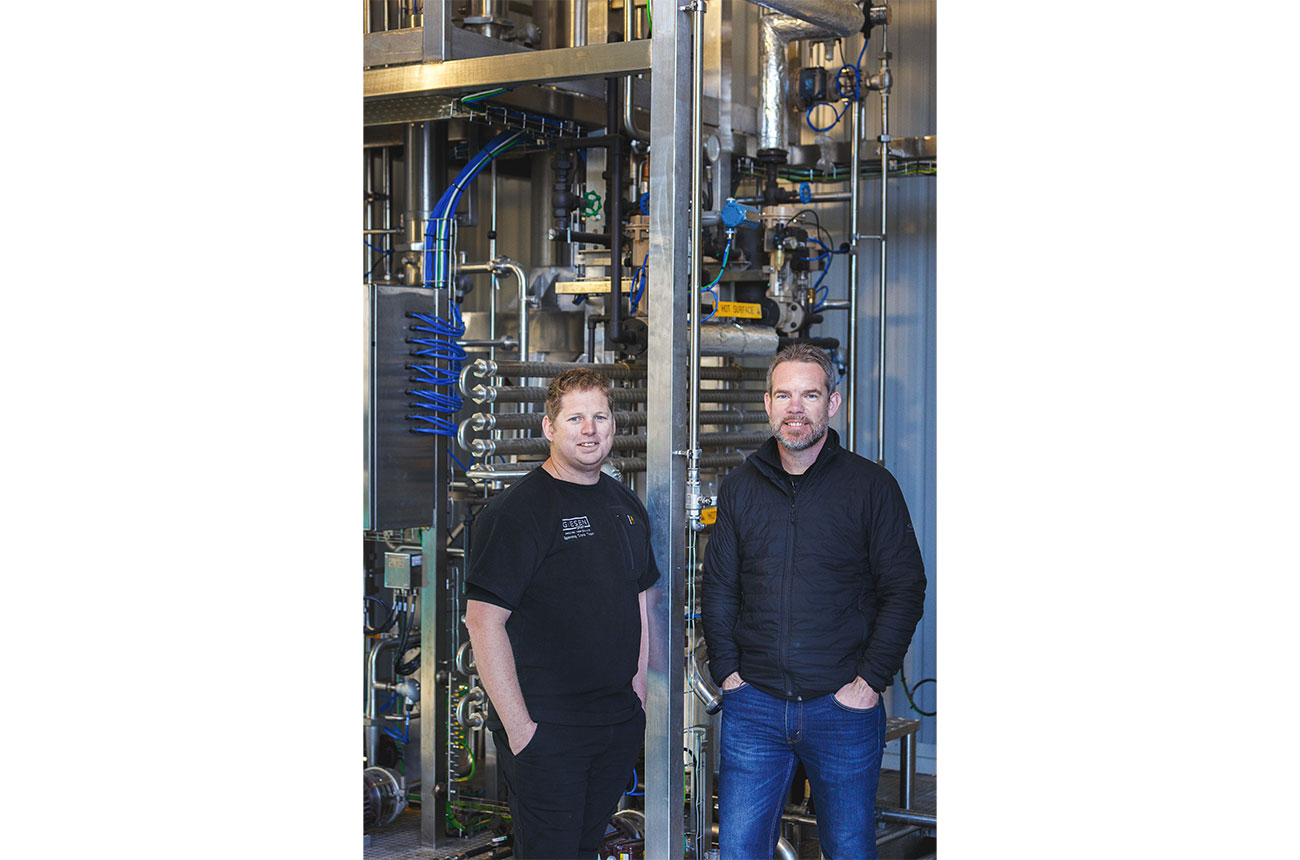
Giesen’s Reinier van Greunen (left) and Duncan Shouler. Credit: ©Jim Tannock Photography Limited / Courtesy of Giesen
As to where the industry goes next, there are three areas that are constantly being worked on.
Firstly, new technology is being developed all the time. Anything which allows for a quicker process and a lower temperature with higher flavour capture will improve the quality of the end product.
Secondly, there’s a growing recognition that quality of fruit matters just as much for de-alcoholised wine as it does for its alcoholic cousin. To put it bluntly, if you put bad wine through a vacuum distillation you’ll get a bad alcohol-free wine out the other side.
‘The higher the quality of the wine, the better the result,’ says Irem Eren of de-alcoholisers BevZero.
Finally, work is ongoing as to how to replace the lost mouthfeel provided by alcohol, without simply using sugar.
‘The sweetness of the alcohol does a lot to soften tannins and smooth out acidity,’ says Aaron Milne of Aussie alcohol-free winery Edenvale. ‘It’s a big hole we are trying to fill.’
More and more producers are trying to do it without overt sweetness, too. Wines are by and large getting drier.
‘Structure is by far the biggest challenge,’ says Bérenger Vaysse, CEO of the French alcohol-free producer Inspire, ‘but sugar is not the solution.’
Whoever can find a solution to the Great Mouthfeel Challenge will become very rich very quickly.
Technology has already evolved to the stage where white wines in particular exhibit varietal typicity. In the next five to 10 years, producers are confident that better fruit and better technology mean we’ll start to see regional differences emerge.
But how about terroir – wine’s holy grail?
It may not be on the horizon just yet. But there’s so much research money and brainpower being invested in this area, it’s probably only a matter of time.

Custom made de-alcoholisation machine at Schloss Wachenheim in Germany. Credit: ©Daniel Prediger Fotografie / Courtesy of Schloss Wachenheim
Alcohol free: Legal definitions
As reported by Decanter in 2023, the UK government plans to lower the minimum abv on all wine to 0%. Under the current regulations, most wine needs to have an abv of at least 8.5% to be labelled as such in UK retailers and bars. There are some exceptions for wines produced in certain regions, which only need to have a 4.5% abv to be marketed as wine. Anything below that level must be sold as a ‘wine-based drink’.


